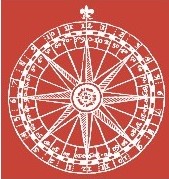La fabrique de la controverse : André Vésale (1514–1564) à la conquête des publics (ou Comment acquérir un nom immortel dans l’histoire des sciences en insultant ses maîtres)
When Andreas Vesalius published the Seven Books on the Fabric of the Human Body in 1543, it was with satisfaction that he created a scandal in the field of medicine and, more generally, among cultivated European readers. Assuming a voice of…
Listada em Article | publicação por grupo Iter Community
Versão 1.0 - publicado em 03 Oct 2025
Licenciado sob Creative Commons BY-NC 4.0
Descrição
When Andreas Vesalius published the Seven Books on the Fabric of the Human Body in 1543, it was with satisfaction that he created a scandal in the field of medicine and, more generally, among cultivated European readers. Assuming a voice of authority in medicine at the age of twenty-eight, he developed his account of dissection as a series of personal observations and denunciations of poor anatomists, beginning with his masters. But not only was this irreverence public, it also created a public, represented on the frontispiece of the work: it established the book as a tribunal of science. The first victim to be tried was Jacques Dubois, professor in Paris’ Faculty of Medicine; his response, published in 1551, fuelled a lengthy posthumous debate, feeding the controversy upon which Vesalius’s posterity is founded.
Cite este trabalho
Pesquisadores devem citar este trabalho da seguinte forma:
Tags
Notas
Original publication: Cazes, Hélène. "La fabrique de la controverse : André Vésale (1514–1564) à la conquête des publics (ou Comment acquérir un nom immortel dans l’histoire des sciences en insultant ses maîtres)." Renaissance and Reformation 42 (1): 2019. 129-162. DOI: 10.7202/1064522ar. This material has been re-published in an unmodified form on the Canadian HSS Commons with the permission of Iter Canada / Renaissance and Reformation. Copyright © the author(s). Their work is distributed by Renaissance and Reformation under a Creative Commons Attribution-NonCommercial 4.0 International License. For details, see https://creativecommons.org/licenses/.
Pré-visualização da publicação
Iter Community
This publication belongs to the Iter Community group.
When watching a publication, you will be notified when a new version is released.
